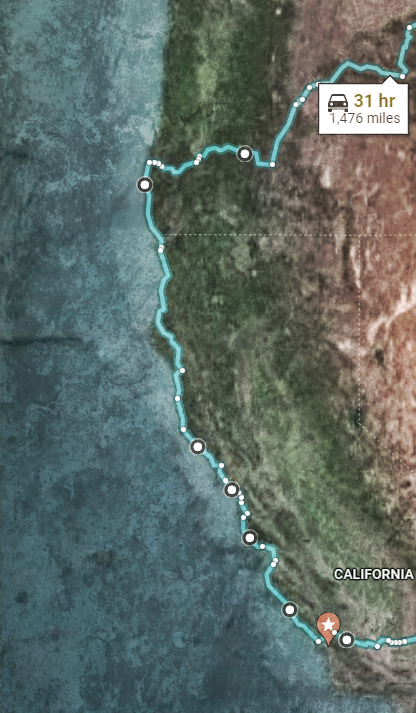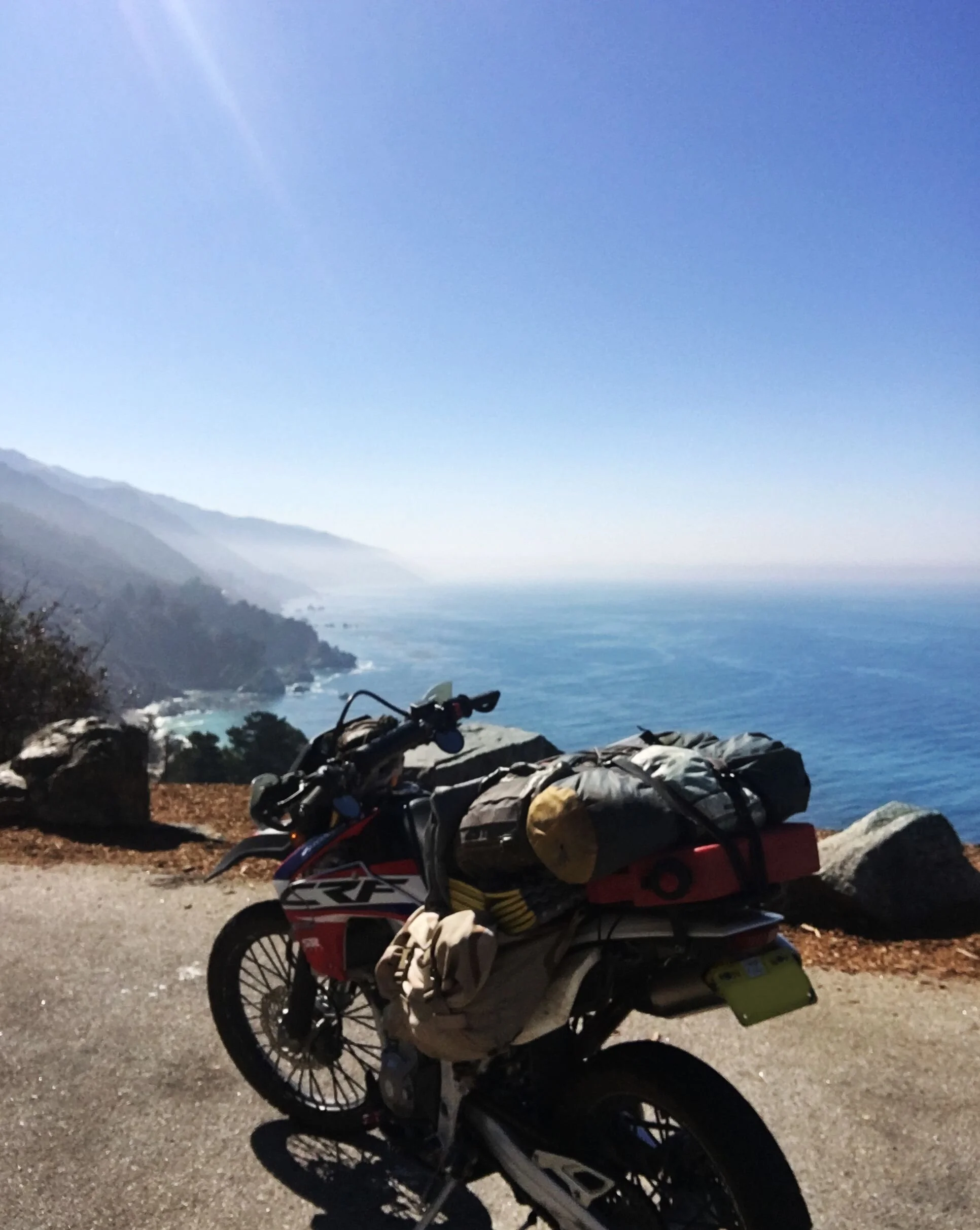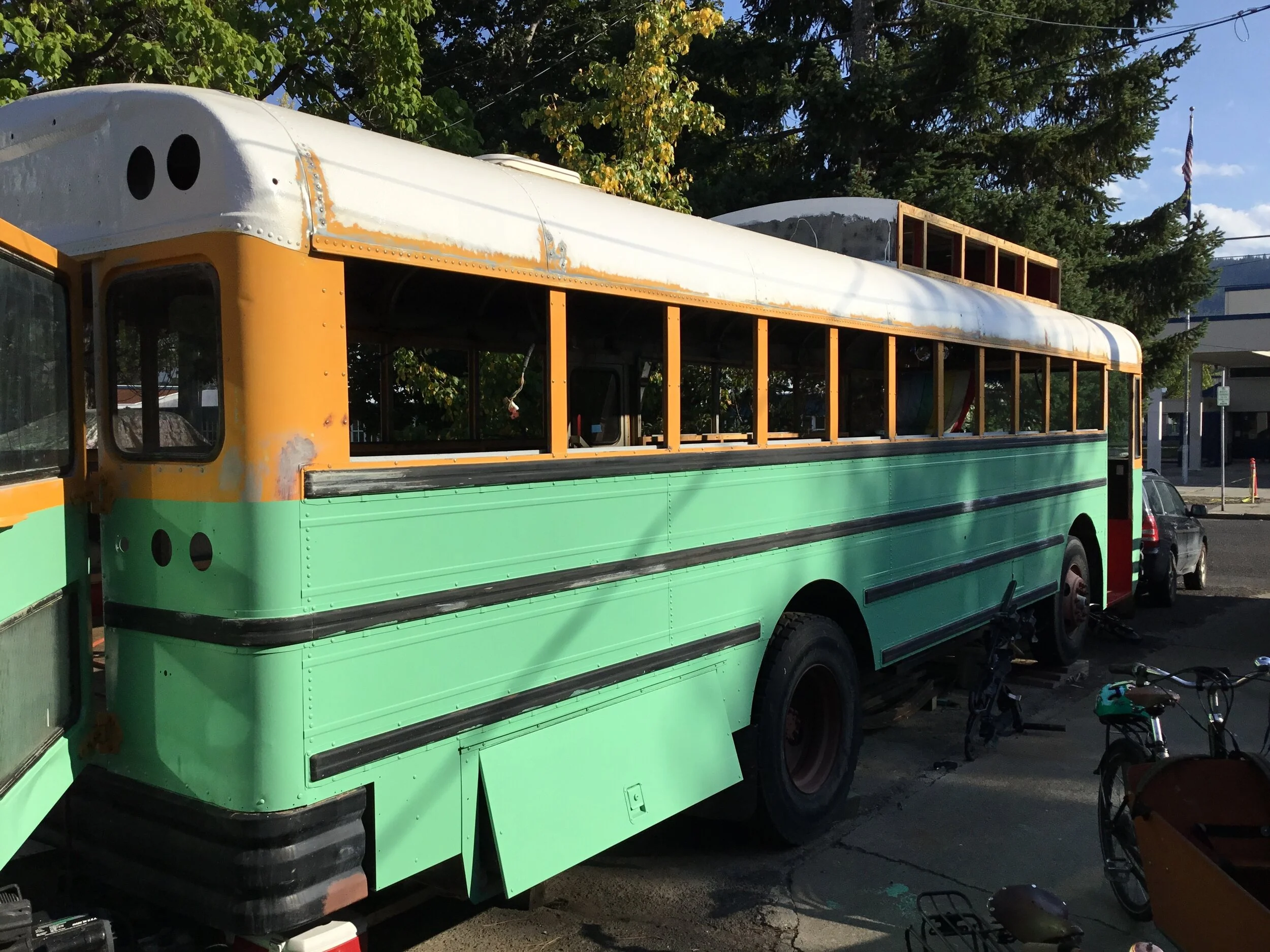I'm Building a Skoolie
Speaking of stoked, my Oregon friends hired me to come help them with their skoolie build for a few months. Free room, free coffee, and a fun project to dig into in a great little town out in the Oregon desert. Perfect. My dreams of becoming a wandering dirtbag design-builder are finally coming to fruition.
The Journey
I had a wedding to attend just north of the Bay, and the mountains were on fire, so I went up the Pacific Coast Highway from Morrow Bay all the way to Coos Bay before cutting inland. That made it my longest ride so far at about 1,500 miles.
All of the coastal campgrounds in California were full. It’s peak season anyway, the forests were closed, and thousands of people who own RVs were under evacuation orders. In several towns I noticed empty lots with homemade signs that said "Free Parking for Fire Refugees". I put in a long day to get up into Oregon where I could camp up in the forests for free.
I camped in the forest outside Bend for four days to await the result of my ‘Rona test after the wedding, before arriving at my friend’s place. The smoke was so thick there I could taste it. I slept with my N95 mask on one night.
There’s a wedding suit rental strapped to that thing.
The Bus
I've been interested in doing a school bus conversion for a long time. There's a lot to like with the scene:
There are a ton of surplus school buses out there, so they can be had inexpensively.
They're tough, built to roll over and not crumple (I can't say so much about Serenity, that's for sure).
There isn't as much concern about materials toxicity, unlike shipping containers.
Weight isn't a huge issue - they're intended to be heavily loaded up, and the mileage is barely effected.
It's possible to do a WVO or biodiesel conversion, if that's your jam.
There's a big online scene of school bus conversions so it's easy to find information about the process and get ideas.
The only downside is the wretched mileage, which is a minor concern if you don't plan on moving your rig around that much.
I could see doing a stationary school bus conversion of my own sometime in the future, ideally with an older classic bus that isn't running any more.
So all that's to say I'm quite excited to be involved with this project. They want to do a shakedown cruise to SoCal in January, and it needs a lot of work to be able to roll by then. The target isn't for it to be totally done, just buttoned up enough to basically car camp inside of it - futons on the deck and Coleman stove sort of thing. Building out the interior finish work can come after.
Obviously, the first thing I did was build a 3d model.
I model each piece of work I’m doing next, oftentimes while sitting in the bus itself. I call this “plein air modeling”.
Being able to point at the 3d model, instead of just waving our hands around, is a game-changer in terms of ensuring we’re both talking about the same thing.
Then I get to work. If the build is detailed enough, I’ll throw a render into a sketch program on my iPad and scribble my takeoffs on it. The rear wall framing, for instance, was pretty complicated. Lots of curves, none of the flat bits lined up with each other, and 3-4 surfaces are all coming together at a point. The modeling process was necessary for me to come up with a design that will work well.
Even so, the process isn’t perfect. I have to be really careful not to design something that I can’t actually install because there’s no room to get the drill in there.





